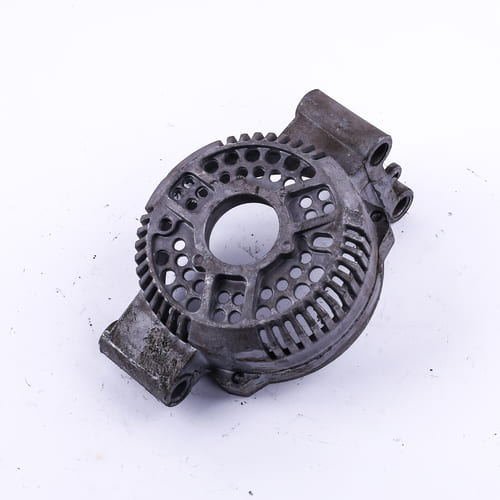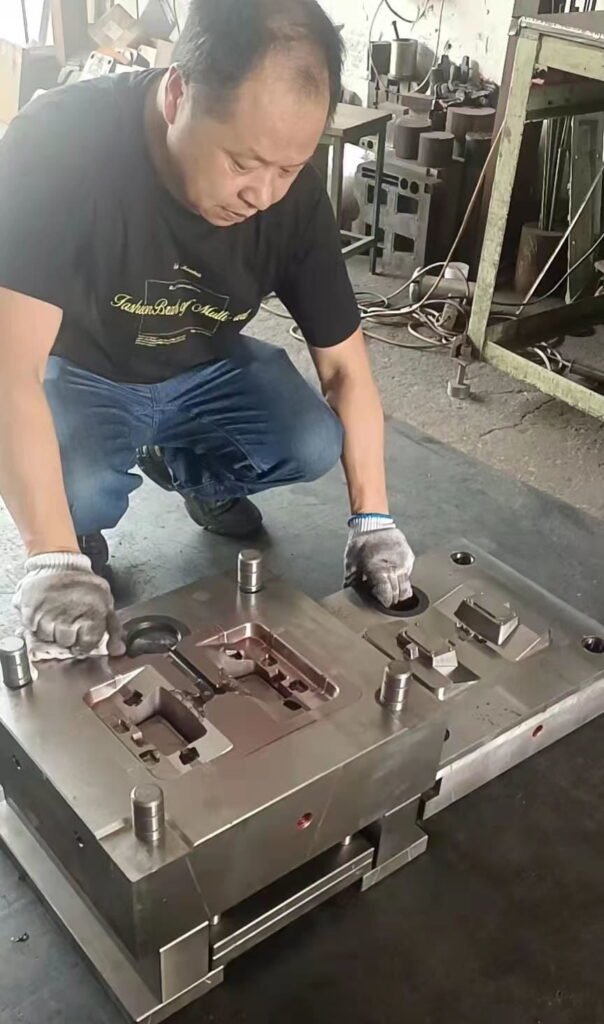There are different types of casting. These include high-pressure casting, low-pressure casting, investment casting, sand casting, centrifugal casting, gravity casting, etc.
However, in this article, we will be considering what low-pressure casting is and the processes involved. We will also discuss the advantages of this type of casting. Okay so, let’s dive in.
Meaning of Low-Pressure Casting
This method of casting uses low-pressure air (around 20-100kpa) rather than gravity to fill the molds with metal.
The holding furnace is located below the cast. The liquid metal will then be forced upwards into the cavity through a riser tube. To fill the mold and hold the metal in place within the die until it solidifies, pressure is applied constantly.
This casting method uses alloys with low melting points. It also uses alloys of components up to 150kg.
The Processes of Low-Pressure Casting
• Melt the metal alloy in a melting furnace and bring it to the casting temperature.
• You have to manufacture the mold already. Incorporate the gating system into the mold. The gating system should be such that the molten metal flows from bottom to top, and not from top to bottom.

The refractory tube should extend from the entrance of the mold’s gating system down into the molten material.
Note that you should keep the position of the mold above the liquid metal. Set up the mold above a sealed airtight chamber containing a crucible holding molten metal.
• The molten metal will move to a holding furnace below the mold. The furnace serves as a container and maintains the liquid at the casting temperature.

• The low pressure forces the molten metal through a riser tube into the mold. The molten metal will be injected upwards directly into the bottom of the mold.
The liquid metal will move under constant pressure until it solidifies in the die cavity. In low-pressure casting, the molten metal slowly fills the die, thereby reducing turbulence. The rate of pressurization of the chamber controls the metal flow.

• After solidification, the air pressure will be released, and the remaining molten metal will move back through the riser tube to the holding furnace for regular recycling. Thereafter, you can remove the casting.
• You can now conduct other production processes (such as CNC machining, surface treatment, etc) on the casting.
Advantages of Low-Pressure Casting
• The process involves constant filling of the die cavity during solidification. So, it is highly accurate. The continual filling of the die cavity compensated for the shrink in volume as the molten metal solidifies.
Low-pressure casting is one of the preferred methods for making complex symmetrical parts. Examples of these parts include engineer parts, suspension, car wheels, cylinder head, piston, missile shell, cylinder block, impeller, etc.

This casting method is also used to manufacture bell housing, pipe benders, etc. When you use it to produce cast steel, such as cast steel wheel and liquid riser, you should use special refractory materials.
• By using sand cores within the die, low-pressure casting is suitable to produce parts with hollow sections and complex geometries.

• Low-pressure casting is cost-effective. It significantly reduces the cost of cleaning, re-work and re-melting of returns. Also, there is no wastage of molten metal as no runner is used. Because the excess molten metal falls back to the laddle, you can re-use it.
• Low-pressure cast parts are pure. This is because the castings have little or no slag that can cause impurity.

Slags are generally found on the surface of molten metals. However, in low-pressure casting, because the riser tubes go down the holding furnace, the liquid metal forced to the cavity does not contain slabs. This gives it better pure casting.
Moreso, because it is a low-pressure process, there is less tendency of slag entering the mold.

• Low-pressure casting does not cause oxidation of the molten metal. This is because of the stable filling process which reduces impacting tumbling and splashing of the molten metal during the casting process.
• Because of the improvement in the fluidity of the liquid metal, low-pressure castings have good formability. The cast parts have excellent surface and clear outline. Also, low-pressure cast parts have high internal quality level.

• Low-pressure casting has a slow, non-turbulent filling and controlled solidification dynamics. So, its cast parts have good mechanical and metallurgical properties, such as low porosity.
• It is convenient to automate. So, it is easier to achieve a more repeatable and quality casting process.
• There is no need for a rider here. Also, the non-condensed metal in the riser can be refluxed to the crucible for use. This significantly improve the recovery rate of the molten metal.

• In low-pressure casting, the cast parts have few internal defects, and less gas and debris. The castings are also dense.
• Low-pressure cast parts can be heat treated.
However, note that:
• Low-pressure casting has a slower casting cycle. This is because of the need to maintain the pressure until casting solidification is complete.
• When the metal part of the equipment comes in contact with the molten metal, this can result in eroded aluminium casting. The ultimate effect of this is high material cost.

• It has a minimum wall thickness of about 3mm. So, unlike high-pressure die casting, it is not suitable for making thin-walled parts.
• This casting method is not suitable for all types of materials. It only uses alloys with low melting points.
Conclusion
In this article, we have explained the meaning of low-pressure casting and the processes involved, its advantages and some other notables. This will help you better understand the peculiarities of low-pressure casting as one of the different types of casting.








